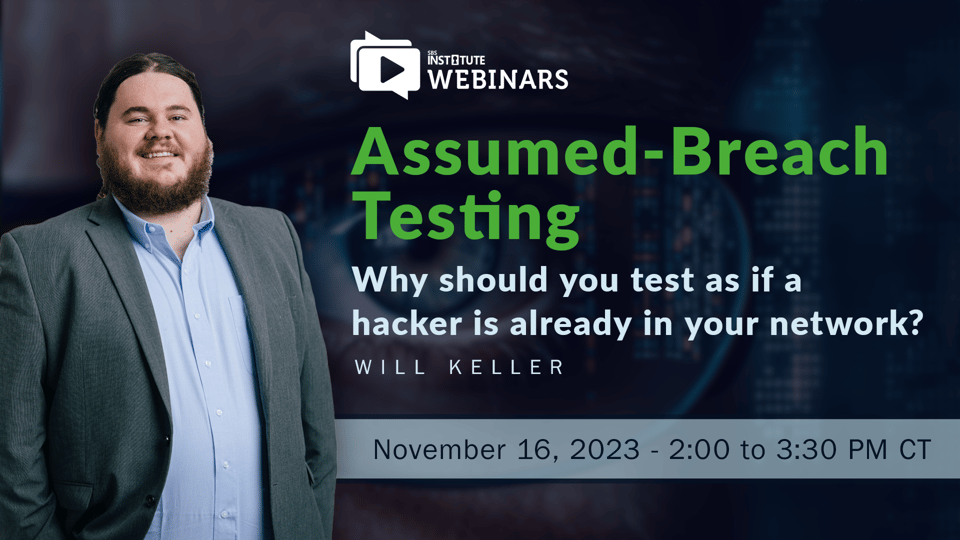Assumed Breach Testing: Why should you test as if a hacker is already in your network?
November 16, 2023 - 2:00 PM CST
Be the first to review

Description
On average, an organization takes 287 days to detect and contain a data breach. Hackers today are very good at breaking into networks and staying undetected for long periods before executing their ultimate objectives. When a cyber incident inevitably occurs, your best bet is to assume your network is compromised and act accordingly rather than think you’re not compromised and carry on as usual.
One of the most important questions to ask yourself is: “If a hacker was in my network, would I know?” Testing your internal and external network security controls regularly is an important way to find the answer. But what happens if the Penetration Test has little or no success?
Assumed-breach testing simulates the initial foothold an attacker might obtain, allowing for more in-depth testing and providing a unique perspective of the organization’s readiness for a real-world breach. Assumed-breach testing helps answer the question of “what can happen if we were breached?”
CPE Credits
 |
SBS | 1.50 |
Learning Objectives
- Modern Cyber Attack Vectors
- Identifying your data stores
- Lateral Movement and Persistence
- Privilege Escalation
- Data Exfiltration
- How to perform Assumed-Breach Testing
- And more!
Procedure
This program uses Microsoft Teams. When you join the webinar, you will be presented with the option to use the Microsoft Teams app or access the event from your browser.
Content
| Webinar Recording | Module |
Speaker
Will Keller
Network Security Engineer - SBS CyberSecurity
Host
Jon Waldman, CISA, CRISC
Co-founder, President - SBS Institute, Chief People Officer – SBS CyberSecurity
Over the past 19 years, Jon has helped hundreds of organizations identify and understand cybersecurity risks to allow them to make better and more informed business decisions. Jon is incredibly passionate about cybersecurity training and education, which led him to be a driving force in the development of the SBS Institute. The Institute is uniquely designed to serve the banking industry by providing industry-specific cyber education. It has grown to include ten certification courses and holds State Association partnerships in over 30 states.Jon maintains his CISA, CRISC, and CDPSE certifications. He received his Bachelor of Science in Computer Information Systems and his Master of Science in Information Assurance with an emphasis in Banking and Finance Security from Dakota State University, a Center of Academic Excellence in Information Assurance Education designated by the NSA.